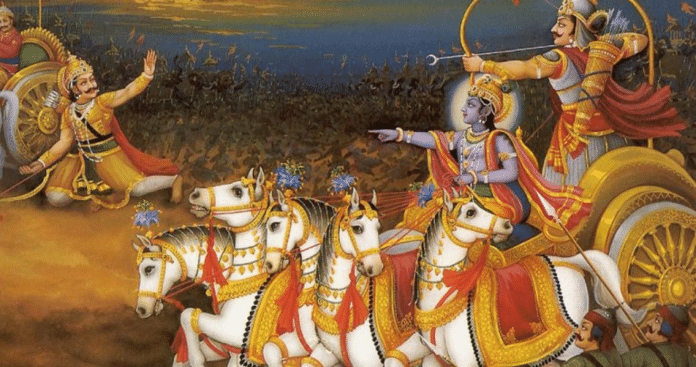In last week, senior archaeologists at the Archaeological Survey of India (ASI) suggested that one of the two major Sanskrit epics of ancient India- Mahabharata could be as old as 1500-2000 BCE instead of 900-1000 BCE as commonly believed.
The discovery was revealed last Friday by the director of the ASI’s Institute of Archaeology, Sanjay Manjul, who had carried out the Sanauli excavation. Sanauli is an archaeological site located in Baraut tehsil, Baghpat district, western Uttar Pradesh, India.
The study follows the discoveries at the excavation site of Sanauli a year ago, including the development of a “war chariot” allegedly determined by a horse, a rusted bow and arrow, a burial site, and ochre-colored pottery, war shields, whip, torch and an antennae sword with a hilt.
Archaeologists used several scientific techniques such as X-Ray, CT Scan, 3D scanning, photogrammetry, and GPR survey to be sure of its accuracy.
As reported in The Economic Times, Archaeologists were revisiting the findings of BB Lal, who had carried out excavations at Indraprastha and Hastinapur in 1951-52. According to Lal, around 800 BC, a massive flood in the Ganga destroyed a considerable portion of the settlement. Based on the relics recovered, he had termed the period painted grey ware (PGW) culture. This was the earliest common pottery connecting all the Mahabharata sites, such as Hastinapur, Mathura, Kurukshetra, and Kampilya.
Lal suggested that the battle in Kurukshetra take place around 800 BC. At that time, the capital was shifted to Kaushambi from Hastinapur during the time of Nichasku, who was the fifth ruler after Parikshit, who ascended the throne after the war, while Udayana, the contemporary of Buddha, was the 19th in the Kuru clan.
Manjul said, “The war chariot found at the site was the first discovery of its kind, and that after advanced testing, it was found to be ‘a horse-pulled one, which brings the site closer to the culture of Mahabharata.”
“The whip we have discovered is specifically the one that is used on a horse, not a bull. The wheels, pole, and yoke are solid, with copper triangles. The helmets, and shields are sophisticated. The Sanauli findings are a missing link with the Rigvedic culture and a sign of our civilizational continuity. Chariots figure prominently in Rigveda, Ramayana, and Mahabharata.”
